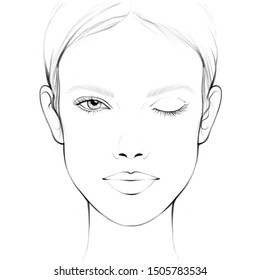A face chart describes a piece of paper featuring the black outline of a blank, bony face. A completed face chart has been brushed, painted, and trimmed with powder and pigment to create a makeup. And if you’ve tried contouring your face in the last, IDK, seven years, you probably followed a face chart based on your face shape—whatever that really means. But it’s 2020 now, and things. Glamzy is all about creating face charts and discovering new makeup. 27,205 face chart stock photos, vectors, and illustrations are available royalty-free. See face chart stock video clips. Blank face chart makeup face chart makeup chart female face chart facechart face chart eyes woman face chart face chart makeup make up chart eyes face chart. Try these curated collections. Sales and chart positions 'Shaddap You Face' went to number one for eight weeks on the Australia Kent Music Report in 1980. It reached number one on the UK Singles Chart on 21 February 1981 and stayed there for three weeks until 8 March 1981, keeping Ultravox's single 'Vienna' out of the top spot throughout.
This tool was originally created with children for children to help them communicate about their pain.
Now the scale is used around the world with people ages 3 and older, facilitating communication
and improving assessment so pain management can be addressed.
If you would like access to the Wong-Baker FACES® Pain Rating Scale, please click
Access the FACES Scale and choose a category that best describes your needs.
- The FACES Scale is widely used with people ages three and older, not limited to children.
- This self-assessment tool must be understood by the patient, so they are able to choose the face that best illustrates the physical pain they are experiencing.
- It is not a tool to be used by a third person, parents, healthcare professionals, or caregivers, to assess the patient’s pain. There are other tools for those purposes.
Stay On: Build Resilience and Thrive While Facing Cancer - Available Now!
Receiving a new cancer diagnosis is often overwhelming for patients and the people who love them.
Sometimes it feels like the world has turned upside down.
Suddenly and unexpectedly, you’re required to make crucial decisions regarding a medical team and treatment plan.
But, you’re not alone. I’ve been in your shoes, and I’ll share with you what I’ve learned.
I know you have answers to your questions within you, and through this book, I’ll help you find them.
We are excited to present our pain care podcast, FACES of Pain Care, where Connie Baker highlights and interviews people and programs creating a real difference in pain care and atraumatic care. In case that term is not familiar to you, atraumatic care minimizes or eliminates physical and psychological distress for patients and families.
Visit our FACES OF Pain Care page to find out more information and subscribe to our podcast
You may even want torecommend a topic or person for future podcasts.
FACES of Pain Care – Episode 13 – Palliative Care with Dr. Frank D. Ferris
After listening to this podcast, you will leave feeling energized by the prospect of palliative care and the benefits a comprehensive team approach brings to patients, families, communities, and healthcare organizations. Everybody wins. Dr. Frank D. Ferris is the executive director of the Palliative Medicine, Research, and Education for Ohio Health. He is a global expert in palliative…
 FACES of Pain Care
FACES of Pain CareFACES of Pain Care – Episode 12 – Coping Strategies when Disaster Strikes with Dr. Laurie Nadel
Our guest discusses coping strategies to bring hope, healing, and strength even in disaster. Dr. Laurie Nadel is a specialist in acute stress, trauma, and anxiety issues and author of The Five Gifts: Discovering Hope, Healing, and Strength When Disaster Strikes. Her first career, as a journalist, led her to spend twenty years writing and producing hard news, meaning…
FACES of Pain CareFACES of Pain Care – Episode 11 – Frequency Specific Microcurrent with Dr. Carolyn McMakin
Face Chart For Makeup
Learn more about Frequency Specific Microcurrent (FSM) from the developer, Dr. Carolyn McMakin. FSM is an exciting new way of treating nerve, muscle pain, and many other conditions using specific frequencies and micro amperage current. Dr. Carolyn McMakin developed Frequency Specific Microcurrent (FSM) in 1996 and began teaching it in 1997. She has a part-time…